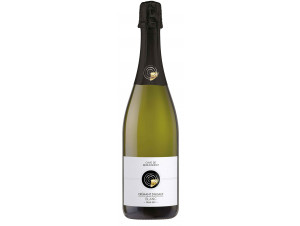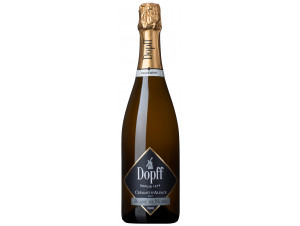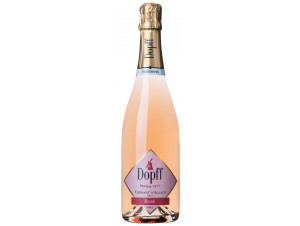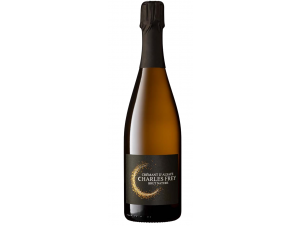You have no items in your shopping cart.
Wine Crémant-D'alsace
-
Top Selling
-
Top Selling
-
Top Selling
- -20%
- -20%
The emergence of Crémant d'Alsace
Crémant d'Alsace represents about a quarter of the wine production of the Alsace region. This excellent sparkling wine is consumed by 36% of the French population. The unique quality of the Alsatian vineyards and its traditional method of vinification give Crémant d'Alsace a privileged title in the field of oenology. The vast vineyards extend over almost all the communes of north-eastern Alsace, more precisely from the Haut-Rhin to the Bas-Rhin.
Crémant d'Alsace actually has two labels: the AOC (Appellation d'Origine Contrôlée), but also the European label, AOP (Appellation d'Origine Protégée).
Crémant d'Alsace is produced using an ancestral traditional vinification method
This sparkling wine is made using a traditional method; formerly known as the "méthode champenoise". The first grapes harvested during the harvest are dedicated to the elaboration of Crémant. The grapes are harvested by hand and the whole bunches of grapes must not be crushed during transport.
Following this meticulous harvest, the fruit is introduced whole, without de-stemming or crushing, into the vats. The must obtained after pressing must be 100 litres for 150 kilograms of grapes. It is then stored in vats according to the grape variety of origin, and then blended according to the type of crémant to be produced.
After the traditional fermentation stage of the wine, the Crémant d'Alsace acquires its particular characteristics as soon as it is bottled. During the transfer phase, a liqueur de tirage is added, composed of sugar and yeast. This fusion will induce a second fermentation: the "prise de mousse". This takes place during the slow ageing period, of at least nine months, when the bottles are laid down "on laths" in the cellars.
This process allows the wine to become effervescent and therefore a crémant. Before being disgorged, the wine bottles are turned upside down every day to allow the deposit to form under the cork. On the day, this deposit is evacuated thanks to the impulse of the carbonic gas contained in the bottle. To finish, the winemaker fills the void left by the lees with a liqueur d'expédition. The latter, according to its sugar content, allows to obtain a dry, semi-dry or brut Crémant d'Alsace.
The Crémant d'Alsace AOC is characterised by a multitude of microclimates
The temperate-continental climate of the Alsace region is particularly favourable to wine growing. Winters are fairly harsh, but spring is nevertheless early. Summers are warm and autumns are rather mild. The numerous rolling hills of Alsace create a multitude of microclimates, which are beneficial to wine production. The Vosges mountains protect the vineyards from oceanic disturbances, which means that the rainfall is the lowest in France.
The climate is therefore highly beneficial to grape growing. The Alsatian vineyards benefit from a generous diversity of terroirs, thanks to the presence of the Vosges mountains and the company of the vast Black Forest. The soil is clayey-limestone, schistose, granitic and even sandy. The grape varieties are therefore of exceptional quality, given the richness of the soil in the area.
The main grape varieties used in the Crémant d'Alsace blend are: Pinot Blanc, Pinot Gris, Pinot Noir, Riesling, Auxerrois and, more exceptionally, Chardonnay. Thanks to a surface area of more than 15,000 hectares of vines, the maximum yield for the production of Crémant d'Alsace is 80 hectolitres per hectare. The Alsatian vineyards stretch over a hundred kilometres at the foot of the Vosges mountains, reaching an altitude of 450 metres.
How to taste a Crémant d'Alsace?
For an ideal tasting, it is advisable to serve it at a temperature of between 5°C and 8°C. Also, this type of sparkling wine should be drunk young, i.e. from 1 year to 6 years maximum.
The different grape varieties that make up Alsace crémants offer balanced, fresh and tasty flavours on the palate. These sparkling wines are delicately fruity and acidic, ideal for the aperitif.
The white Crémant d'Alsace is generally adorned with a luminous pale yellow colour with amber reflections, with fine refreshing bubbles. Its fragrance is pleasantly fruity. Its aromas are reminiscent of white flowers and white-fleshed fruits such as granite apples and peaches.
As for the rosé, it offers intense scents of red fruits, suggesting tasty raspberries, cherries or redcurrants. Its colour is pale pink, bright and luminous. It is dense and creamy in the mouth.
What to pair a Crémant d'Alsace with?
Crémant d'Alsace is the perfect choice to accompany your aperitifs or desserts. As a starter, you can enjoy it with caviar or smoked salmon toast. It is also excellent served with a seafood or fish platter. It is during dessert that this sparkling wine offers its most delectable flavours. It goes wonderfully well with fruity desserts, such as fruit sorbets, raspberry tarts, or strawberry charlottes. Finally, it goes naturally with soft cheeses with a bloomy rind (Brie, Camembert or Chaource).
Alsace Chasselas ou Gutedel
Alsace Grand Cru Altenberg de Bergbieten
Alsace Grand Cru Altenberg de Bergheim
Alsace Grand Cru Brand
Alsace Grand Cru Eichberg
Alsace Grand Cru Froehn
Alsace Grand Cru Hatschbourg
Alsace Grand Cru Kanzlerberg
Alsace Grand Cru Kirchberg de Ribeauvillé
Alsace Grand Cru Kitterlé
Alsace Grand Cru Mandelberg
Alsace Grand Cru Moenchberg
Alsace Grand Cru Muenchberg
Alsace Grand Cru Osterberg
Alsace Grand Cru Pfersigberg
Alsace Grand Cru Saering
Alsace Grand Cru Schlossberg
Alsace Grand Cru Schoenenbourg
Alsace Grand Cru Sporen
Alsace Grand Cru Steinklotz
Alsace Grand Cru Wineck-Schlossberg
Alsace Grand Cru Winzenberg
Alsace Klevener de Heiligenstein






































 TWIL - Achat de Vin
TWIL - Achat de Vin


